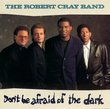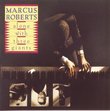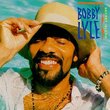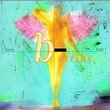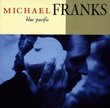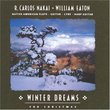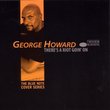| All Artists: Trance Mission Title: Trance Mission Members Wishing: 0 Total Copies: 0 Label: City of Tribes Release Date: 4/22/1997 Genres: Dance & Electronic, Alternative Rock, International Music, Special Interest, Pop, Rock Styles: Techno, Dance Pop, By Decade, 1990s, Progressive, Progressive Rock Number of Discs: 1 SwapaCD Credits: 1 UPC: 758228100223 |
Search - Trance Mission :: Trance Mission
 | Trance Mission Trance Mission Genres: Dance & Electronic, Alternative Rock, International Music, Special Interest, Pop, Rock
|
Larger Image |
CD DetailsSimilarly Requested CDs
|
CD ReviewsTrance Mission R. A. Smith | Sacramento, CA United States | 01/28/2001 (4 out of 5 stars) "This band out of San Francisco is a unique blend of percussion and wind instruments that incorporates the didgeriedoo into the mix. Kind of a tribal spacey mix." A Deeper Look at Trance Mission UVaBCA | 03/15/2010 (4 out of 5 stars) "During my preparation for a music class I am taking this semester I was researching the instrument the Harmonium, and stumbled across a trio called Baraka Moon who uses one. 1 One of the members, Stephen Kent, plays the didjeridu, which was an instrument I was unfamiliar with, so upon further exploration I discovered some of his earlier work: Trance Mission.
Trance Mission began when Stephen Kent and Beth Custer would meet up for jam sessions in San Francisco in the early 90's and eventually kept adding group members and guests into the mix, forming an accumulation music that has aspects of percussion, sulings, P'iri, digital atmospheres, moorsing, horns, kalimbas, gongs, handclapping, gubgubi, clarinets, kartals, riqqs, trumpets, khaens, dotars, drums, synthesizers, samples, guitar, vocals, cello, the didjeridu, and about a dozen more instruments from all over the globe.2 From exploring Wikipedia, I've gathered that the didjeridu is typically a hollowed wooden tube that is blown on one end, originating from north Australia, the suling is a bamboo flute originating from Indonesia, the gubgubi is a drum from Bengal, the kartal cymbals are from India, the khaen mouth organ is from Laos, the kalimba is an African thumb piano, the dotar lute from Central Asia, the Arabic riqq is a type of tambourine, the moorsing is an idiophone from South India, and the P'iri is similar to an oboe originating from Korea. The first song I listened too was "Bo Didgeley." The song begins with light blows on what sounds like the didjeridu. A wild yell then opens the song into about a dozen sounds playing at once. The vibes resonating from around the world through their respective instruments immediately invades the listener's mind and the processed samples add a modern overlay to the strong melody of Beth Custer's saxophone. It has a familiar rhythm to it, but with unfamiliar additions keeping the song interesting, for example at 50, 60, and 97 seconds into the song. Half way through the song (just before 2 minutes into the piece) the vocal chanting noises come in and a sense of being in tribal chaos predominates. It pushes one to feel that he is attending a raw, local ritual where ape-like dancing would pursue while an enthusiastic elder shouts to the crowd. After this bit in the piece it tends to be a bit static, repeating the same rhythms and additions as earlier in the song. While it's still catchy to listen too, by this point in the piece the novelty is gone and my mind started to wander elsewhere rather than continue to be entranced into the song. One thing that impressed me was that the saxophone, clarinet, guitar, cello, and trumpets were being exploited to the listener in a more experimental way (as opposed to immediately associating a sax with a jazz song for example) that made me want to check out more of Trance Mission's songs. "Vee Dee Vu" and "Tjilpi II" start with similar ambiances as "Bo Didgeley." "Tunnels", "Folk Song", "Rig", "Red Man", and "Icaro" are slower starting out and appeared to be more intellectual as opposed to dance or exercise music in terms of the atmosphere of the listener. Kif sounded brassier than many of the others and my first instinct when listening to the beginning was that it reminded me of a polka song with a digital blanket tossed over the poppy sounds it normally carries. The album takes all of these indigenous instruments from every culture and combines them into a rare, mesmerizing soundtrack of digitalized trance music that I would recommend to anyone. 1 -[...] 2 - Credits from [...]/0,,202442,00.html 3 - All instruments were found on Wikipedia " |

 Track Listings (9) - Disc #1
Track Listings (9) - Disc #1